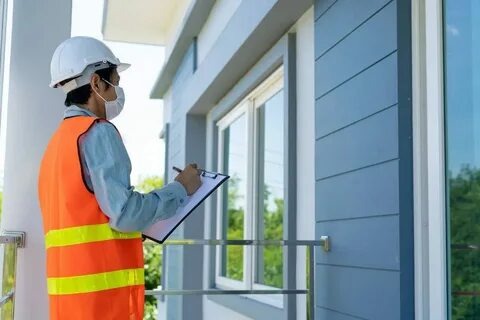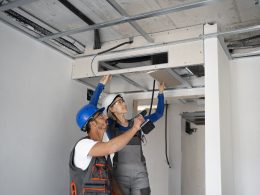Introduction
Buying a newly built home is an exciting milestone. Everything feels fresh—brand-new appliances, untouched walls, spotless floors, and modern finishes. But despite the clean appearance, a new build isn’t automatically flawless. Builders, subcontractors, and inspectors are human, and mistakes or oversights can (and often do) occur.
Before you move in and start decorating, it’s essential to complete a thorough inspection. A newly constructed home should be more than just visually appealing—it should also be structurally sound, safe, and compliant with local codes. This guide covers everything you should check before signing off and moving in.
What to Check Before Moving Into a Newly Completed Home
1. Structural Integrity and Foundation
Start with the basics. Even new homes can have foundation issues, especially if the soil wasn’t properly compacted or if weather impacted the build process.
Check for:
- Cracks in the foundation or walls (especially in corners or around windows)
- Uneven flooring or settling
- Doors and windows that don’t align properly or won’t close completely
Even small cracks or misalignments can indicate deeper issues that may worsen over time.
2. Plumbing and Water Systems
Leaks, faulty installations, or poor water pressure are common in new homes due to rushed timelines or overlooked connections.
Check:
- All faucets for proper water pressure and leaks
- Toilets for proper flushing and running water
- Hot water heater functionality
- Visible pipes for leaks under sinks or in basements
- Hose bibs outside the home
Make sure that water drains quickly from tubs and sinks, and that no wet spots appear under or around plumbing fixtures.
3. Electrical Systems
Electrical issues can be more than an inconvenience—they can be a safety hazard.
Inspect:
- All light switches and outlets
- GFCI outlets in bathrooms, kitchens, and exterior locations
- Circuit breaker labeling
- Smoke and carbon monoxide detectors
- Exterior lighting and doorbell functionality
It’s also wise to test each outlet with a plug-in tester to confirm proper wiring and grounding.
4. Roofing, Gutters, and Drainage
Even brand-new roofs can have installation flaws. Gutters that aren’t installed correctly can lead to future water damage.
Look for:
- Shingles that are missing or misaligned
- Gutters that are securely attached and sloped properly
- Downspouts that direct water away from the foundation
- Water pooling near the home after rainfall
Drainage around your new home is critical to preventing future foundation or basement issues.
5. HVAC and Insulation
Your home’s heating, cooling, and ventilation systems play a major role in comfort and energy efficiency.
Review:
- Thermostat functionality
- Heating and cooling cycles for each room
- Airflow from vents
- Proper insulation in the attic and crawl spaces
- Clean filters and ductwork
Request a copy of the HVAC system manual and maintenance history, even for a new installation.
6. Appliances and Fixtures
Ensure every installed appliance works properly and meets the brand or model specified in your contract.
Test:
- Oven, stove, and range hood
- Dishwasher and garbage disposal
- Refrigerator and freezer
- Washer and dryer hookups
- Shower heads and faucets for proper flow and temperature
If anything feels off, take photos and report it to your builder immediately.
7. Windows, Doors, and Locks
New windows and doors should function smoothly and seal tightly. These are often areas where builders cut corners, especially on alignment.
Inspect:
- Window locks and ease of opening/closing
- Door seals, especially at exterior entry points
- Lock functionality (including deadbolts)
- Garage doors and openers
- Screens and weather stripping
Make sure all points of entry are secure and that energy isn’t being lost through small gaps.
8. Walls, Paint, and Finishes
A cosmetic check is still important. Look closely at:
- Paint consistency, coverage, and drip marks
- Drywall seams and nail pops
- Flooring (scratches, gaps, or swelling)
- Grout lines in tile
- Cabinet alignment and drawer functionality
Take note of anything unfinished or inconsistent—it’s much easier to have these issues addressed before you move in.
9. Landscaping and Exterior
Don’t overlook the exterior of your home. Poor grading or incomplete landscaping can lead to water intrusion or erosion.
Check:
- Grading away from the home
- Sod or seed condition
- Sprinkler system (if applicable)
- Exterior paint or siding
- Driveway and walkway finishes
If exterior work is incomplete, ask for a clear timeline on when it will be finished.
10. Hire a Third-Party Professional for an Independent Review
One of the biggest misconceptions about new homes is that they don’t need a third-party inspection. Builders often perform their own walkthroughs and offer a final “punch list,” but having your own expert gives you peace of mind.
If you’re unsure who to call, a simple online search for a home inspector near me can help you locate licensed professionals with experience in evaluating new construction.
Third-party inspectors aren’t tied to the builder, so they can give you an unbiased assessment. This can uncover hidden issues or reinforce your confidence in the build quality.
Why a Residential Property Inspection Still Matters
Even though a home is new, a residential property inspection is still one of the most important steps you can take before move-in. It ensures that your dream home is not only beautiful on the surface, but structurally and mechanically sound beneath it.
New homes often come with a one-year builder warranty—but you must identify and document issues before that period expires. A detailed inspection report becomes your record for requesting repairs and protecting your investment.
Final Thoughts
A newly completed home is full of promise but only if it’s truly ready for occupancy. Before you move in, take the time to inspect thoroughly, document everything, and consider hiring a professional to walk through with you.
Addressing these concerns early on can save you thousands of dollars and untold frustration later. When it comes to your new home, check now, relax later.












